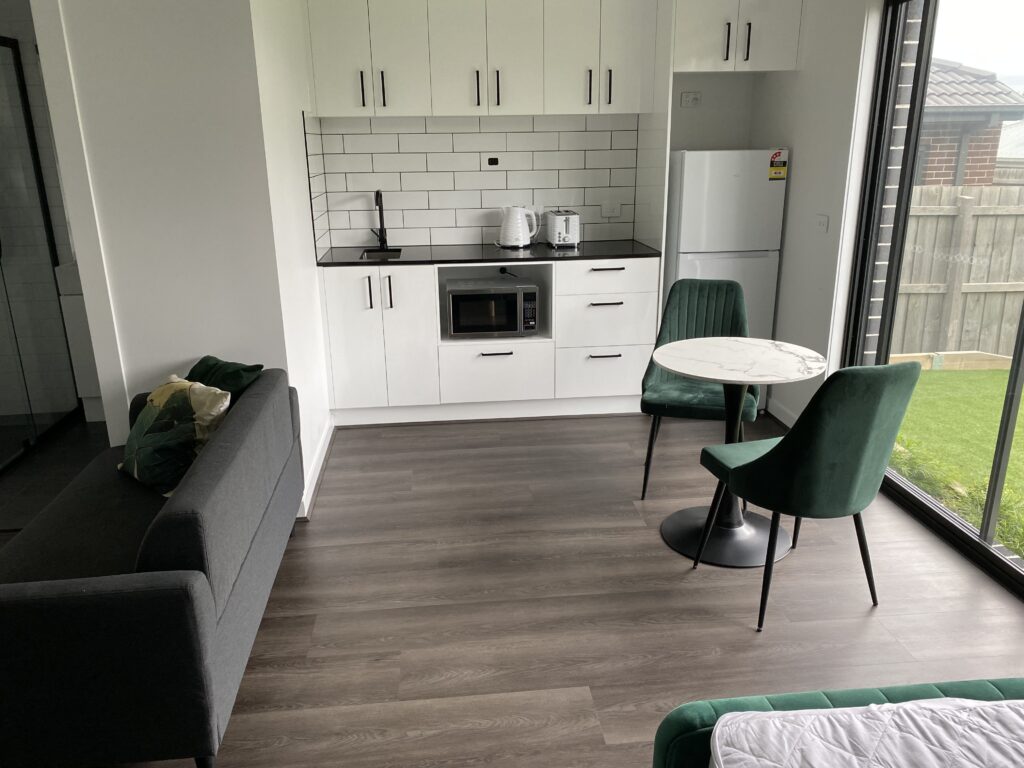How We Deliver High Yields by Doing What Others Won’t

CO-LIVING & DUAL KEY PROPERTIES
“Multiple Income Streams, Broader Tenant Appeal”
For investors seeking high-yield property investment with lower risk, co-living homes and dual key properties provide multiple income streams under one roof. These properties cater to the general rental market, attracting a broad tenant base and reducing vacancy risks.
• Co-living properties, including rooming houses, offer private ensuite bedrooms with shared common areas. Rooming houses are a more structured form of co-living, often featuring self-contained spaces with kitchenettes and private entrances.
• Dual key properties divide one title into two separate dwellings, allowing for independent living and higher rental returns.
These investment options help maximise rental income while ensuring consistent occupancy.

Benefits
- Stable rental income with minimised turnover risks
- Multiple income streams within a single property
- Versatile tenant appeal for reduced vacancy rates
Discover Co-Living and Rooming House Opportunities
Frequently Asked Questions
A Co-Living property is a shared residential space where tenants have private bedrooms and share communal areas, such as the kitchen, living room, and sometimes bathrooms. This type of living arrangement fosters a community atmosphere and is ideal for people looking for affordable rent and social interaction.
A Rooming House is a residential property designed to accommodate multiple individual tenants. Each tenant typically has their own private room with a kitchenette, bathroom, and sometimes a separate entrance. This setup provides a higher level of privacy for tenants compared to traditional shared housing.
Rooming Houses are generally a larger and more expensive investment than Co-Living properties, as they require a bigger build and individualised rooms. Each room in a Rooming House includes a kitchenette and its own entrance, making it more private for the tenant, similar to a small studio. This level of privacy allows for higher rental returns compared to Co-Living properties.
A Dual Key property is a single property that has been divided into two separate living spaces, each with its own entrance. These spaces can be rented out separately, providing flexibility for investors and potentially increasing rental income. Dual Key properties are often used for extended family living or for investors who want to maximise their return.
Co-Living properties can generate a stable rental income as they cater to individuals looking for affordable, community-oriented living. They’re often more affordable to set up than Rooming Houses, making them a popular choice for first-time investors or those with a smaller budget.
Rooming Houses are designed for tenants who want a more private space but are comfortable living within a shared property. Due to each room’s private facilities, Rooming Houses can attract higher rental rates. This setup provides a greater rental return potential, making it appealing to investors.
Co-Living and Rooming House properties are popular with young professionals, students, and people who value the balance of privacy and community. Tenants enjoy having their own space but also benefit from communal areas and an affordable rental arrangement.
Yes, both Co-Living and Rooming House properties must meet local council regulations and building codes. Rooming Houses, in particular, have more stringent requirements due to their design as individualised units. It’s essential to check local guidelines and work with professionals to ensure compliance.
In Co-Living properties, tenants pay for individual rooms but share common spaces. In Rooming Houses, each tenant has a private, self-contained room with higher rental potential due to the increased level of privacy and amenities. Both arrangements offer steady rental income for investors.
Consider the level of investment you’re comfortable with, the local demand for this type of housing, and council regulations. Rooming Houses require a larger upfront investment but have the potential for higher rental returns. Meanwhile, Co-Living can be a more affordable entry point, particularly in high-demand areas.
